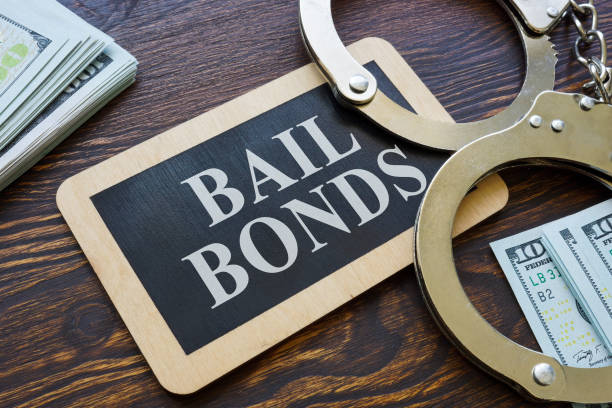Recognizing Your Legal Rights When Utilizing a Bail Bondsman
Recognizing Your Legal Rights When Utilizing a Bail Bondsman
Blog Article
Comprehending the Basics of Bail Bonds: What You Need to Know
Navigating the intricacies of bail bonds is an important facet of the legal system that can significantly influence the implicated's trip with court process. The complexities of how bail bonds operate, the numerous types readily available, and the important considerations in picking a reliable bail bondsman can be intimidating.
What Is Bail?
Bail is an economic plan that allows a specific accused of a criminal activity to be released from custody while waiting for trial. The key function of bail is to make sure that the defendant stands for future court proceedings (Bail Bondsman). Generally established by a court, the bail quantity differs depending upon the nature of the criminal activity, the accused's criminal background, trip risk, and other relevant elements
When bail is given, the accused or an agent needs to pay a specified amount, which may be in money or via a bail bond. Sometimes, bail can be rejected entirely, especially for serious offenses or if the suspect presents a substantial threat to public safety and security. The principle of bail is rooted in the assumption of innocence, reinforcing the idea that individuals should not be punished before a conviction.

Understanding Bail Bonds
A bail bond is a financial tool that facilitates the release of an accused person from guardianship, serving as a guarantee for their appearance at future court days. This arrangement permits offenders to keep their freedom while awaiting trial, decreasing the problems connected with imprisonment. The bail bond process usually entails a third-party business, recognized as a bondsman, who offers the necessary funds to the court on behalf of the implicated.
Bail bonds can be found in different types, including guaranty bonds, residential property bonds, and money bonds, each with distinct needs and ramifications. Surety bonds, one of the most common kind, require a superior repayment, typically a percentage of the complete bail quantity, which is non-refundable. On the other hand, a residential or commercial property bond entails utilizing actual estate as security, while money bonds require the complete bail total up to be paid upfront.
Understanding the nuances of bail bonds is crucial for accuseds and their family members. It is vital to grasp the possible monetary implications, including fees and commitments to the bail bondsmansman, in addition to the legal obligations tied to ensuring court looks. Knowledge of these aspects help in making informed decisions throughout a tough time.
How Bail Bonds Work
The process of protecting a bail bond typically includes a number of vital steps that guarantee the implicated can reclaim their liberty while awaiting trial. Initially, the private or their depictive calls a bondsman, that assesses the case and the associated dangers. The bondsman will certainly require information about the accused, including the charges, the bail quantity established by the court, and any kind of pertinent individual information.
As soon as the bail bondsman concurs to give the bond, the charged or their representative must pay a non-refundable fee, typically a portion of the overall bail amount. This cost makes up the bail bondsman for handling the monetary danger of ensuring the accused appears in court. Sometimes, collateral may likewise be needed, such as residential property or useful possessions, which works as safety for the bond.
After the cost and any kind of security are arranged, the bail bondsman sends the essential documentation to the court. Upon authorization, the bail is posted, and the charged is launched from wardship. It is crucial for the implicated to comply with all court dates and conditions, as failure to do so can result in the loss of the bond and possible lawful effects.
Types of Bail Bonds
Various kinds of bail bonds are available to suit different conditions and needs. One of the most usual type is the surety bond, where a bondsman assurances settlement of the complete bail total up to the court for a non-refundable charge, generally around 10% of the bail. This setup permits offenders to protect their launch without paying the entire bail upfront.
One more kind is the money bond, which requires the accused or a co-signer to pay the full bail quantity in cash directly to the court - Bail Bondsman. This option is commonly preferred for lower bail quantities, as it guarantees the cash is returned upon the defendant's appearance in all court proceedings
Home bonds entail using realty as security. In this instance, the court places a lien on the residential or commercial property, which can be surrendered if the offender fails to appear.
Finally, government bail bonds are especially developed for federal situations, usually involving higher amounts and extra intricacies. Recognizing these various bail bond kinds is vital for accuseds and their households in making educated decisions during a tough time.
Picking a Bondsman
When choosing a bondsman, it is important to take into consideration numerous key elements that can impact the general experience and outcome. Examine the bail bondsman's reputation by researching on-line testimonials and acquiring suggestions from trusted sources. A reputable bail bondsmansman will have a background of professionalism and effective instances.

It is additionally vital to comprehend the charge structure. The Your Domain Name majority of bail bondsmensman charge a non-refundable fee, typically around 10% of the bail amount. Be wary of any kind of concealed charges or unusual settlement methods. Transparency in rates is a trademark of a trustworthy bondsman.
Conclusion
Bail serves as my latest blog post a monetary guarantee of court look, while various types of bail bonds provide to various circumstances. Comprehending the functional devices of bail bonds and choosing a trustworthy bail bondsman can considerably affect the total experience.
The intricacies of exactly how bail bonds run, the numerous types available, and the important factors to consider in selecting a respectable bail bondsman can be discouraging. The bail bond process usually entails a third-party company, known as a bail bondsman, that gives the necessary funds to the court on behalf of the implicated.
The most usual type is the surety bond, where a bail bondsman assurances repayment of the complete bail quantity to official source the court in exchange for a non-refundable cost, typically around 10% of the bail. Bail offers as a monetary assurance of court appearance, while different kinds of bail bonds cater to different conditions. Understanding the operational mechanisms of bail bonds and choosing a reliable bail bondsman can dramatically influence the overall experience.
Report this page